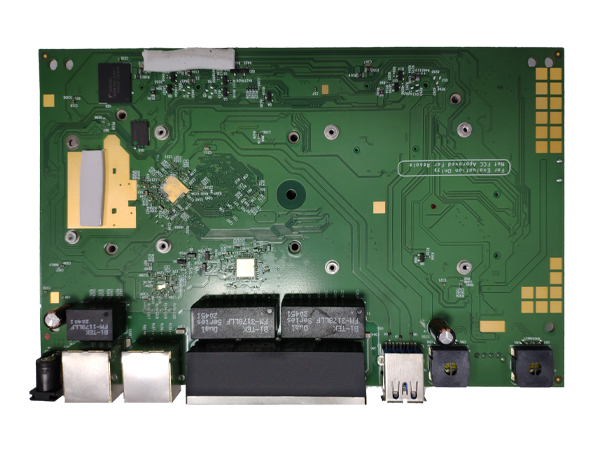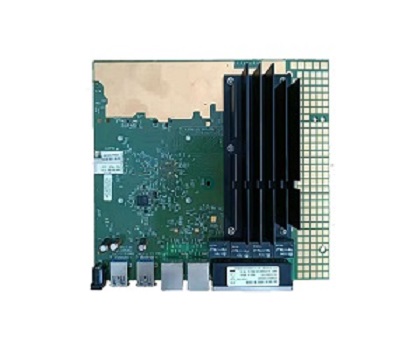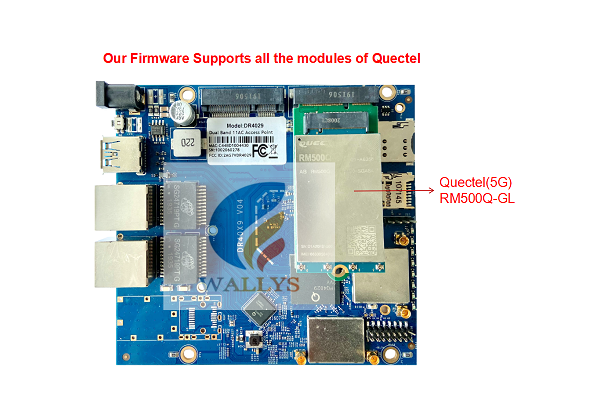Support WiFi 6E Card,802.11ax,QCN9074
802.11ac and 802.11ax are different wireless (WiFi) technology standards that are present in WiFi routers or gateways. WiFi and Internet capabilities are constantly evolving. Up until 2019, the most common wireless standard called for 802.11ac, also referred to as WiFi 5. However, in late 2019, 802.11ax (also known as WiFi 6) was launched, providing enhanced capabilities over its predecessor. These two WiFi standards are important to understand because they determine what devices you will need for your home network, which features they support, and the overall performance of your WiFi.
What is 802.11ac (WiFi 5)?
802.11ac is the 5th generation in WiFi standards and was introduced around 2013. 802.11ac is commonly referred to as WiFi 5 and was developed by the Wi-Fi Alliance to achieve gigabit speeds, meaning WiFi 5 could provide speeds up to 3.5 Gbps under optimal conditions. In addition to faster speeds, WiFi 5 offered wider WiFi frequency channels that allowed wireless devices to send and receive more data, resulting in faster overall performance. WiFi 5 (802.11ac) also introduced MU-MIMO technology that facilitated data to be sent to multiple devices simultaneously. Most notably, WiFi 5 was developed to only use the 5GHz wireless frequency, rather than both 2.4 GHz and 5 GHz frequencies.
What is 802.11ax (WiFi 6)?
802.11ax, or WiFi 6, is the latest WiFi standard and is the highest performing. WiFi 6 is capable of speeds up to 9.6 Gbps which means its faster than WiFi 5, making it better for video streaming, online gaming and more high-bandwidth applications. WiFi 6 offers more efficient data management for faster speeds and supports both the 2.4 GHz and 5 GHz frequencies for faster Internet across both frequency channels. A new feature called “Targeted Wake Time (TWT)” allows your router to put the WiFi connection to “sleep” when not in use, saving the battery life of your smartphones, laptops and other connected devices until they are needed. WiFi 6 has the power to higher number of connected devices and deliver more data to those devices, meaning you will have a much faster and more efficient Internet connection to all devices.
■ Qualcomm Atheros IPQ8072A AR Quad Core CPU
■ On-board 5GHz radio, up to 2475 Mbps physical data rate 8 MB NOR Flash, 256MB NAND Flash
■ On-board 2.4GHz radio, up to 1147Mbps physical data rate
■ Support 802.11ac TX Beamforming
■ Support 802.11ac/802.11ax MU-MIMO DL and UL
■ Support OFDMA DL and UL
■ Tri-band support with 5G SBS (4x4/5GHz ) + 4x4/2.4GHz
■ Supports Dynamic Frequency Selection (DFS)
Dual-core ARM 64bit A53@1.0GHz Processor
512MB DDRL3L System Memory
4MB NOR Flash, 128MB NAND Flash
2x2 On-board 2.4GHz radio,up to 573Mbps physical Data Rate
Support BT5.1
M.2 Card Slot for 5G (QUECTEL RM 500Q-GL) ;
M.2 Card Slot for QCN9074 WIFI 6E Card
Symbol
Parameter
CPU
Qualcomm-Atheros IPQ5018
CPU Frequency
Dual-core ARM 64 bit A53 @1.0 GHz processor
System Memory
512MB DDR3L 16-bit interface with 32-bit memory bus design
Ethernet Port
4 x 1Gbps Ethernet Ports or 1 x 1Gbps Ethernet Port & Poe
NGFF Slot
M.2 Card Slot for 5G (QUECTEL RM 500Q-GL) ;M.2 Card Slot for QCN9074 WIFI 6E Card
EMMC
4G/8G(optional)
USB /header
1x USB 3.0 Port
POE
NA
DC Jack
12V power supply
LED header
LED for power ,Wifi strength
Serial Port
support
Wireless
On-board 2x22.4GHz MU-MIMO OFDMA 802.11b/802.11g/802.11n/802.11ax,max 23dBm per chain
2x IPEX Connectors
BluetoothBT5.1
Nor Flash
8MB
Nand Flash
128 MB
DDR
512MB
Dimension
170mm x 120mm x 15mm
BY:Wallys Communications (Suzhou ) Co., LTD
EMAIL:sales3@wallystech.com











暂无评论